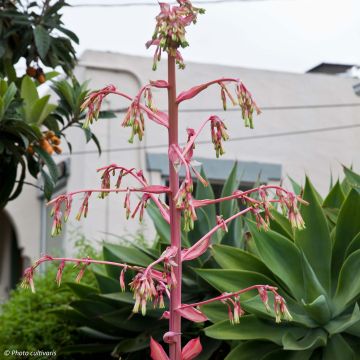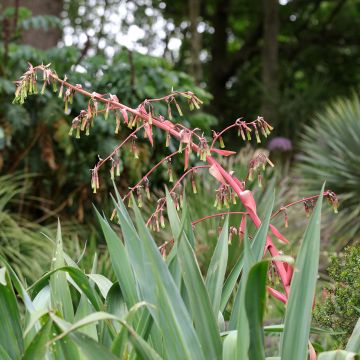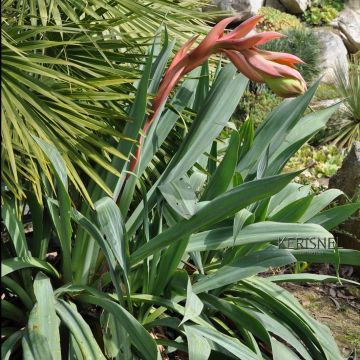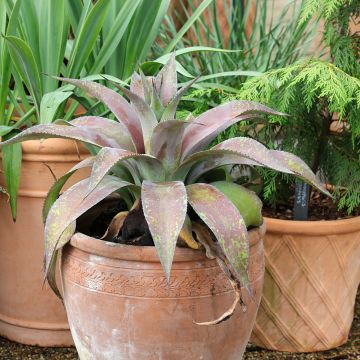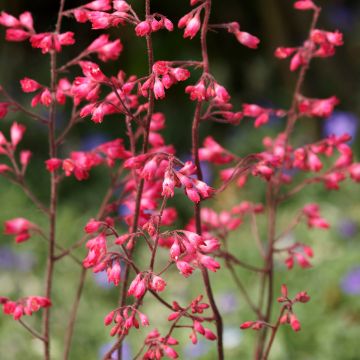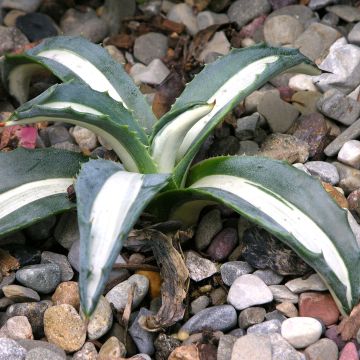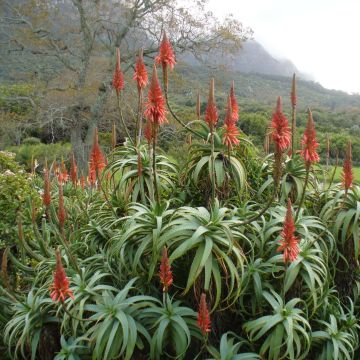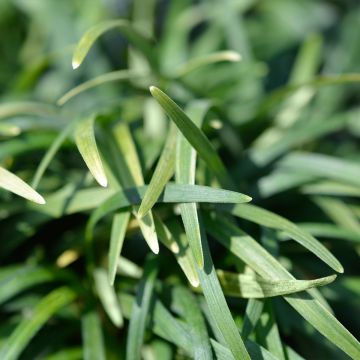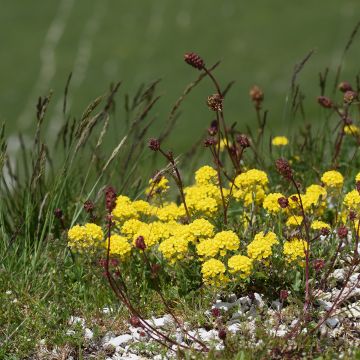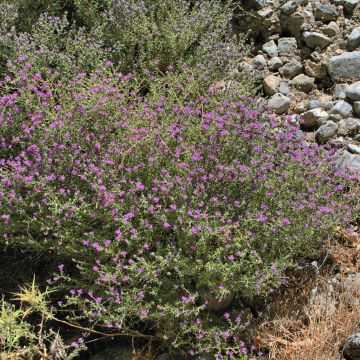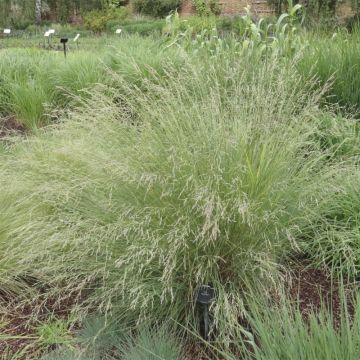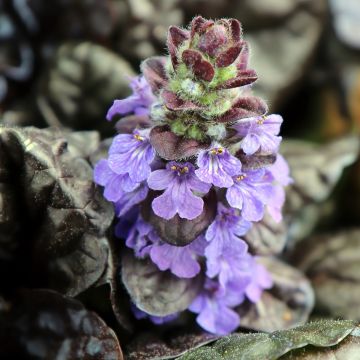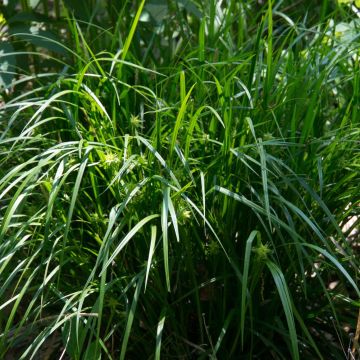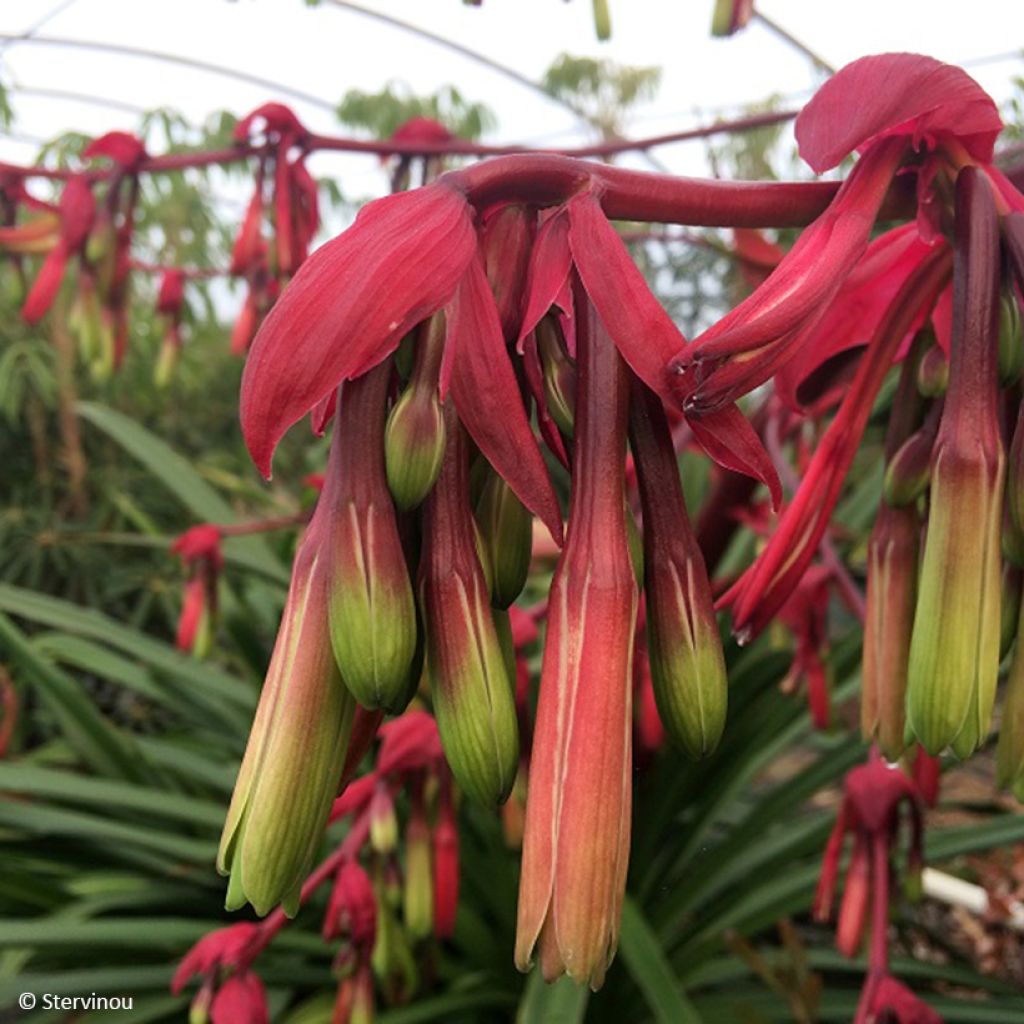

Beschorneria albiflora
Beschorneria albiflora
Beschorneria albiflora
White-flowered Beschorneria
This item cannot be shipped to the selected country
Delivery charge from €5.90
More information
Schedule delivery date,
and select date in basket
This plant carries a 12 months recovery warranty
More information
We guarantee the quality of our plants for a full growing cycle, and will replace at our expense any plant that fails to recover under normal climatic and planting conditions.
From €5.90 for pickup delivery and €6.90 for home delivery
Express home delivery from €8.90.
Does this plant fit my garden?
Set up your Plantfit profile →
Description
Beschorneria albiflora is the only species of the genus capable of forming a small trunk, called a stipe. It is much rarer in cultivation than its cousin, the Beschorneria yuccoides, but it should adapt to most warm temperate climates. Adult plants form a kind of small palm tree, with a crown of large, shiny, and flexible leaves. From the heart of this foliage a spectacular, pinkish-red, arched inflorescence emerges, adorned with tubular and pendulous white-pink flowers with fine red bracts. This tender plant is sensitive to winter moisture. It requires well-drained soil and will thrive in full sun on a terrace, in a rock garden, or in a light and dry understory among the roots of old trees.
This magnificent Beschorneria albiflora grows in the Mexican states of Oaxaca and Chiapas, specifically on steep rocky slopes in humid oak forests at an altitude of 2000 m. The species is sometimes given as a synonym for Beschorneria chiapensis. It is a perennial rhizomatous plant that forms a trunk reaching up to 80 cm in height after several years. At its tip, a crown of large, long, glossy, pointed, non-rough leaves elegantly curves towards the ground. Adult plants produce an upright and arched, pinkish-red inflorescence that can reach up to 3 m from the ground under favourable conditions. It bears numerous unusual and delicate tubular and trailing flowers; the white corolla turns pink and is surrounded by decorative fine red bracts. This nectar-rich flowering attracts many pollinating insects. After pollination, capsules containing seeds are formed. This species also produces bulblets on its flower stalk. They can be harvested and replanted to obtain new subjects identical to the mother plant. The crown is hardy down to -8/-9°C in well-drained soil, but its foliage can suffer damage from -5°C.
In mild climates, Beschorneria albiflora is ideal for structuring a large rock garden, an exotic bed, or in rows to add an exotic touch to the edge of an understory, among the roots of old trees. It can be planted as a solitary specimen or combined on a slope with Agave americana 'Variegata' or the giant fennel (Ferula communis) for example. In the understory, it will also accompany Bear's Breeches (Acanthus mollis) and the Woolly Foxglove (Digitalis lanata). Gardeners in colder regions can plant it in a very large pot on the terrace, right next to a dwarf banana tree, carefully choosing the most sheltered and sunny spot.
Report an error about the product description
Flowering
Foliage
Plant habit
Botanical data
Beschorneria
albiflora
Asparagaceae
White-flowered Beschorneria
South America
Other Beschorneria
Planting and care
Plant Beschorneria albiflora in full sun or partial shade (in hot and dry climates), in a well-tilled and well-drained, slightly acidic or alkaline, sandy, loamy or rocky soil: It is sensitive to winter moisture and cold. This species tolerates dry soils quite well in summer, under the cover of trees. Its crown will withstand light frosts, to about -8°C. As the plant reaches a large size, it should be grown in very large pots, preferably in terracotta or wooden containers. It should be stored in a slightly heated veranda or a cold greenhouse during winter, protected from heavy frosts, outside of the mildest winter regions.
Planting period
Intended location
Care
This item has not been reviewed yet - be the first to leave a review about it.
Evergreen perennials
Haven't found what you were looking for?
Hardiness is the lowest winter temperature a plant can endure without suffering serious damage or even dying. However, hardiness is affected by location (a sheltered area, such as a patio), protection (winter cover) and soil type (hardiness is improved by well-drained soil).

Photo Sharing Terms & Conditions
In order to encourage gardeners to interact and share their experiences, Promesse de fleurs offers various media enabling content to be uploaded onto its Site - in particular via the ‘Photo sharing’ module.
The User agrees to refrain from:
- Posting any content that is illegal, prejudicial, insulting, racist, inciteful to hatred, revisionist, contrary to public decency, that infringes on privacy or on the privacy rights of third parties, in particular the publicity rights of persons and goods, intellectual property rights, or the right to privacy.
- Submitting content on behalf of a third party;
- Impersonate the identity of a third party and/or publish any personal information about a third party;
In general, the User undertakes to refrain from any unethical behaviour.
All Content (in particular text, comments, files, images, photos, videos, creative works, etc.), which may be subject to property or intellectual property rights, image or other private rights, shall remain the property of the User, subject to the limited rights granted by the terms of the licence granted by Promesse de fleurs as stated below. Users are at liberty to publish or not to publish such Content on the Site, notably via the ‘Photo Sharing’ facility, and accept that this Content shall be made public and freely accessible, notably on the Internet.
Users further acknowledge, undertake to have ,and guarantee that they hold all necessary rights and permissions to publish such material on the Site, in particular with regard to the legislation in force pertaining to any privacy, property, intellectual property, image, or contractual rights, or rights of any other nature. By publishing such Content on the Site, Users acknowledge accepting full liability as publishers of the Content within the meaning of the law, and grant Promesse de fleurs, free of charge, an inclusive, worldwide licence for the said Content for the entire duration of its publication, including all reproduction, representation, up/downloading, displaying, performing, transmission, and storage rights.
Users also grant permission for their name to be linked to the Content and accept that this link may not always be made available.
By engaging in posting material, Users consent to their Content becoming automatically accessible on the Internet, in particular on other sites and/or blogs and/or web pages of the Promesse de fleurs site, including in particular social pages and the Promesse de fleurs catalogue.
Users may secure the removal of entrusted content free of charge by issuing a simple request via our contact form.
The flowering period indicated on our website applies to countries and regions located in USDA zone 8 (France, the United Kingdom, Ireland, the Netherlands, etc.)
It will vary according to where you live:
- In zones 9 to 10 (Italy, Spain, Greece, etc.), flowering will occur about 2 to 4 weeks earlier.
- In zones 6 to 7 (Germany, Poland, Slovenia, and lower mountainous regions), flowering will be delayed by 2 to 3 weeks.
- In zone 5 (Central Europe, Scandinavia), blooming will be delayed by 3 to 5 weeks.
In temperate climates, pruning of spring-flowering shrubs (forsythia, spireas, etc.) should be done just after flowering.
Pruning of summer-flowering shrubs (Indian Lilac, Perovskia, etc.) can be done in winter or spring.
In cold regions as well as with frost-sensitive plants, avoid pruning too early when severe frosts may still occur.
The planting period indicated on our website applies to countries and regions located in USDA zone 8 (France, United Kingdom, Ireland, Netherlands).
It will vary according to where you live:
- In Mediterranean zones (Marseille, Madrid, Milan, etc.), autumn and winter are the best planting periods.
- In continental zones (Strasbourg, Munich, Vienna, etc.), delay planting by 2 to 3 weeks in spring and bring it forward by 2 to 4 weeks in autumn.
- In mountainous regions (the Alps, Pyrenees, Carpathians, etc.), it is best to plant in late spring (May-June) or late summer (August-September).
The harvesting period indicated on our website applies to countries and regions in USDA zone 8 (France, England, Ireland, the Netherlands).
In colder areas (Scandinavia, Poland, Austria...) fruit and vegetable harvests are likely to be delayed by 3-4 weeks.
In warmer areas (Italy, Spain, Greece, etc.), harvesting will probably take place earlier, depending on weather conditions.
The sowing periods indicated on our website apply to countries and regions within USDA Zone 8 (France, UK, Ireland, Netherlands).
In colder areas (Scandinavia, Poland, Austria...), delay any outdoor sowing by 3-4 weeks, or sow under glass.
In warmer climes (Italy, Spain, Greece, etc.), bring outdoor sowing forward by a few weeks.

































